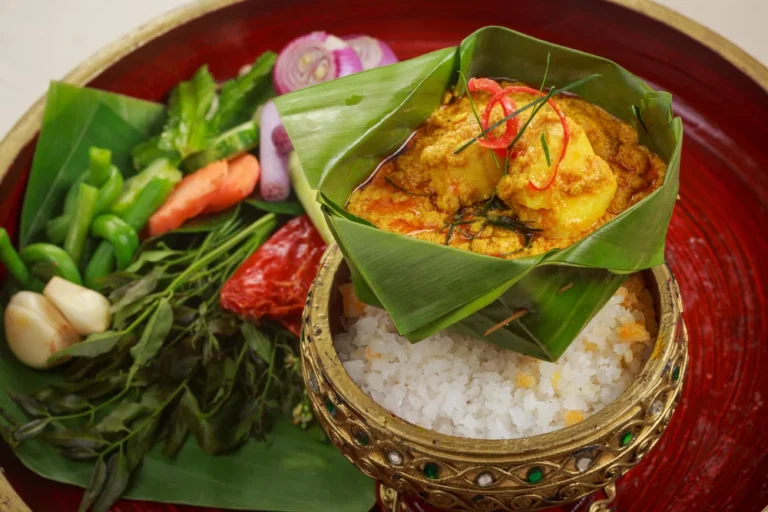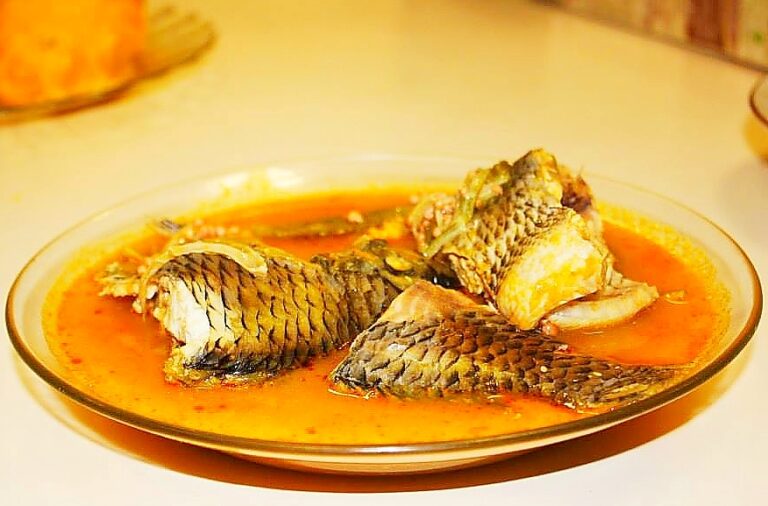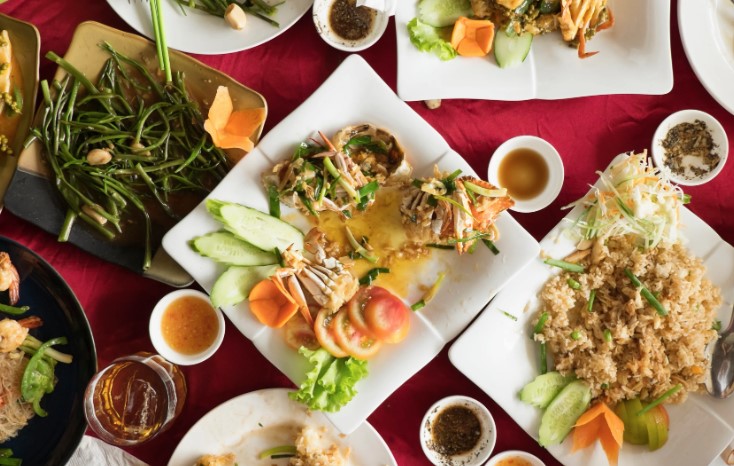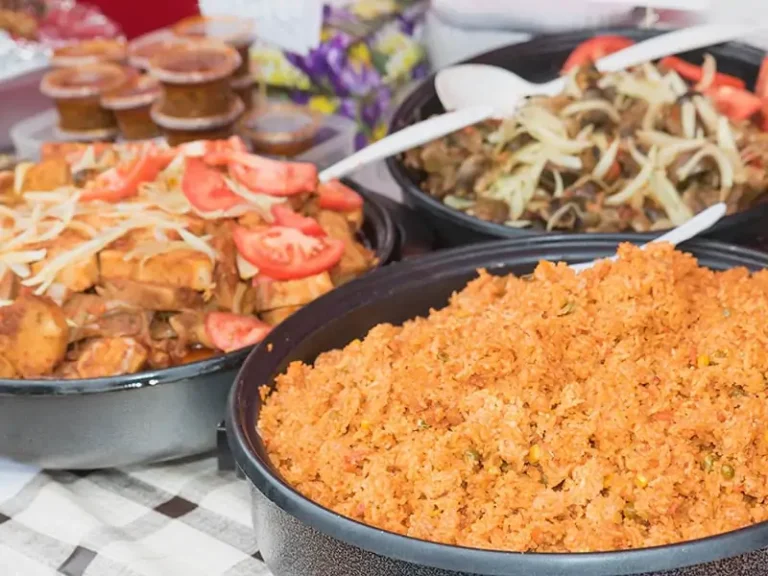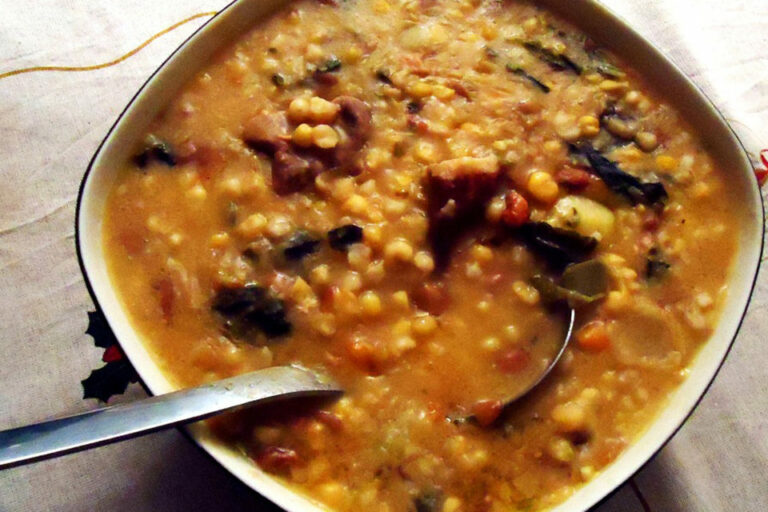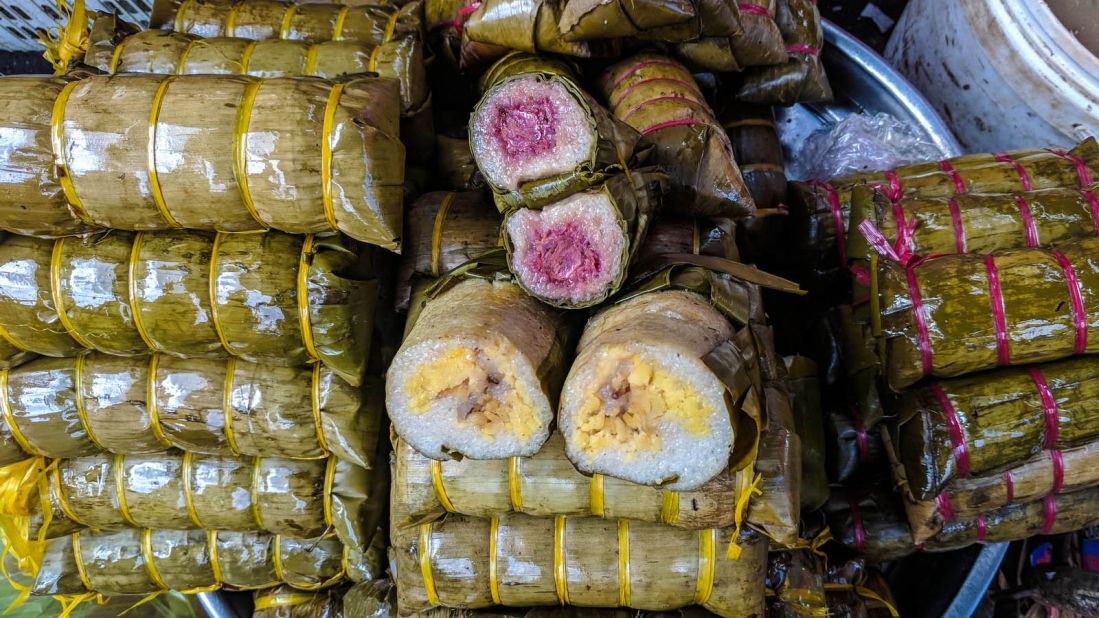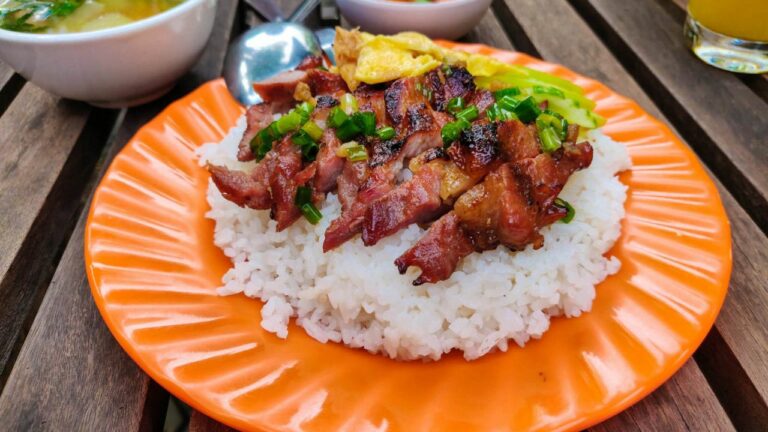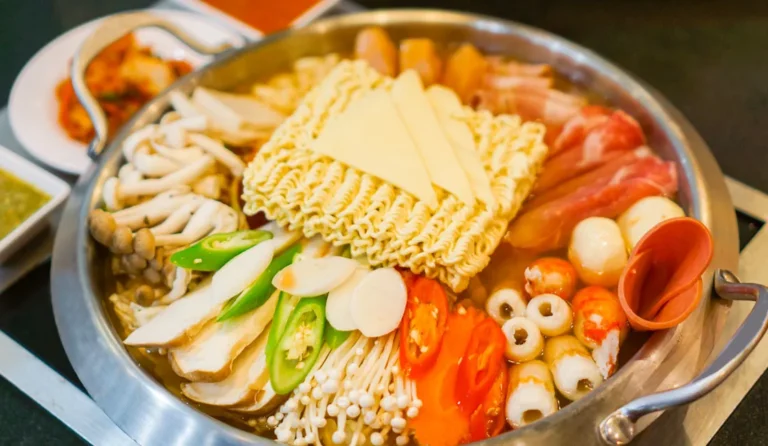Introduction: Delving into Cambodia’s Traditional Snacks and Appetizers
Cambodia’s cuisine is known for its unique blend of flavors, influenced by its neighboring countries Thailand and Vietnam. The country’s traditional snacks and appetizers offer a wide range of flavors, from sweet and salty to spicy and savory. These dishes are not only delicious but also reflect the country’s rich culture and history.
Num Pang: A Classic Cambodian Street Food Staple
Num Pang is a sandwich that is popularly sold on the streets of Cambodia. It is made from a baguette-like bread called Pate, which is filled with meat, vegetables, and spicy sauce. The meat filling can be pork, beef, or chicken, and the vegetables are usually pickled carrots, cucumbers, and cilantro. Num Pang is a great snack or appetizer to grab on the go, and its unique blend of flavors makes it a must-try dish for visitors to Cambodia.
Khmer Lok Lak: A Meaty and Flavorful Delight
Khmer Lok Lak is a popular Cambodian dish that is usually served as an appetizer or main course. It is made from marinated beef strips, served on a bed of lettuce, tomatoes, cucumbers, and onions. The beef is cooked in a sauce made from soy sauce, lime juice, and black pepper, giving it a tangy and savory flavor. Khmer Lok Lak is often paired with a side of rice and is enjoyed by both locals and tourists alike.
Fried Spring Rolls: A Crispy and Delicious Finger Food
Fried Spring Rolls are a popular snack in Cambodia and are often served as an appetizer. They are made from a mixture of minced meat, vegetables, and spices, rolled in a spring roll wrapper and deep-fried until crispy and golden brown. The filling can be pork, chicken, or vegetables, and the spring rolls are often served with a sweet and sour dipping sauce.
Prahok Ktiss: A Spicy and Savory Dip for Your Chips
Prahok Ktiss is a traditional dip made from fermented fish, pork, coconut milk, and spices. It is a popular snack in Cambodia and is usually served with a side of fresh vegetables or chips. The dip has a strong and salty flavor, with a spicy kick from the chili peppers. Prahok Ktiss is not for everyone, but it is a must-try dish for those who enjoy bold and intense flavors.
Nom Banh Chok: A Refreshing and Filling Rice Noodle Dish
Nom Banh Chok is a refreshing and filling dish that is popular in Cambodia, especially for breakfast. It is made from rice noodles topped with a curry-like sauce made from fish paste, lemongrass, and turmeric, and served with fresh vegetables and herbs. Nom Banh Chok is a light yet satisfying dish that is perfect for hot summer days.
Bai Sach Chrouk: A Breakfast Favorite with Sweet and Salty Flavors
Bai Sach Chrouk is a popular breakfast dish in Cambodia and is made from grilled pork served on a bed of rice, topped with a sweet and salty sauce made from soy sauce, sugar, and garlic. The dish is often served with a side of pickled vegetables and a fried egg. Bai Sach Chrouk is a simple yet delicious dish and is a great way to start your day in Cambodia.
Kralan: A Sticky and Sweet Snack Made from Glutinous Rice and Coconut
Kralan is a traditional Cambodian snack made from glutinous rice, coconut milk, and sugar. The rice is mixed with coconut milk and sugar and then stuffed into a bamboo tube. The tube is then roasted over an open flame until the rice is cooked and the outside is crispy. Kralan is a sticky and sweet snack that is perfect for satisfying your sweet tooth. It is often sold by street vendors in Cambodia and is a popular snack for festivals and special occasions.

